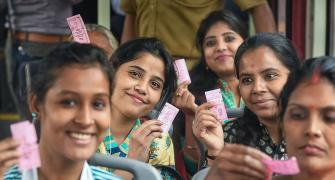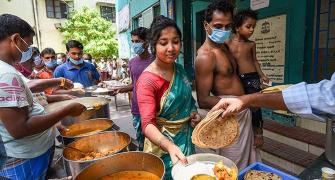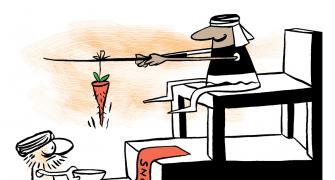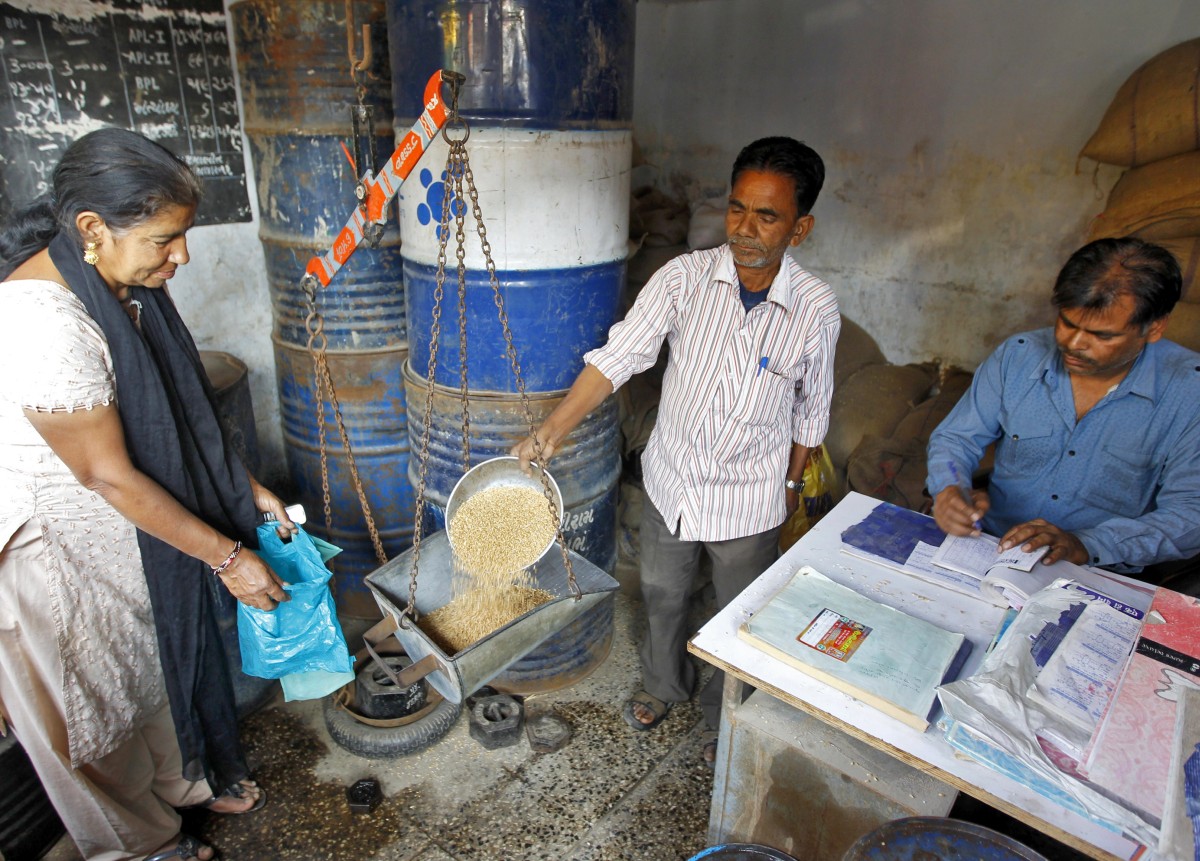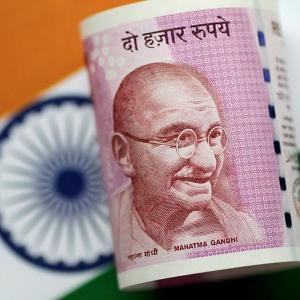'The decision to supply free food grains is not an economically sound decision because the government will find it very difficult in future to charge anything for food grains.'
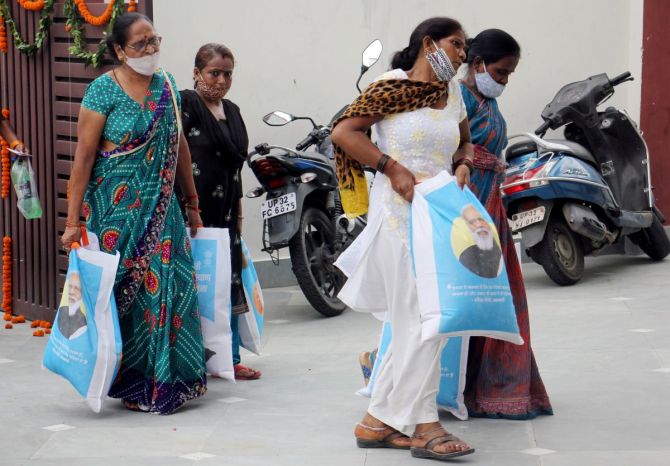
When then finance minister Dr Manmohan Singh put the country on the path to economic liberalisation in 1991 the belief was that the 'socialism' enshrined in the Constitution was as good as dead.
'There ain't no such thing as a free lunch' would be the reality of the new India.
The message was clear from Dr Singh's policies then that everything ultimately has a cost and nothing is truly free in this new capitalist India.
And the most important phrase then was, 'Let the markets decide.'
32 years later, Prime Minister Narendra Modi is saying, 'Let the State decide.'
The Modi government in the last week of December decided to provide 5 kg of food grains free of cost to 81 crore (810 million) under the National Food Security Act.
Households covered by the Antyodaya Anna Yojana (poorest of poor) scheme will get 35 kg per household.
This scheme will be applicable for one year till December 2023, just 5 months away from the 2024 general elections.
Are such freebies beneficial for the economy?
Is the cost justified?
The Congress has criticised the Modi government, stating that 81 crore Indians who were eligible for 10 kilograms of food grains will now get only 5 kilograms.
So what is the truth?
To get answers to such questions, Syed Firdaus Ashraf/Rediff.com spoke to Siraj Hussain, the former Union agriculture secretary.
Why was the Pradhan Mantri Garib Kalyan Anna Yojana discontinued after two years? Is it because COVID-19 is nearing its end, or something else?
At this point of time, the government did not have much option except to discontinue PMGKAY because of the lower stock of food grains in the central pool.
Due to lower procurement of wheat in 2022-2023, the wheat stock is the lowest in 5 years.
Is that the only reason?
Yes, the central pool stocks are low and I think the government would like to watch the progress of rice procurement in the kharif marketing season 2022-2023.
Due to lower rainfall in UP, Bihar and Jharkhand, there is concern about the production of rice. So, I think discontinuation of PMGKAY is the correct decision.
If PMGKAY was discontinued, what was the need to announce free food grains to 810 million people under the National Food Security Act?
In my view, the decision to supply free food grains is not an economically sound decision because the government will find it very difficult in future to charge anything for food grains.
Even the UPA government was not able to revise the issue price of wheat and rice and the NFSA further lowered it to Rs 2/kg for wheat and Rs 3/kg for rice.
The NFSA provides for revision of prices after 3 years of its enactment.
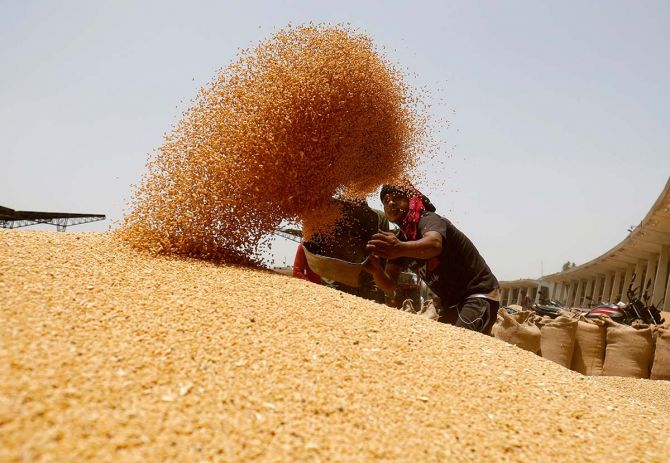
Can you explain in layman terms what is the difference between providing food under the PMGKAY and the NFSA?
What did an individual get under the PMGKAY and what does one get under the NFSA?
Under the NFSA, all the eligible ration card holders of priority families are getting 5 kg of food grains per person per month.
The Antyodaya Anna Yojana families get 35 kg per month irrespective of family size.
PMGKAY was providing them with an additional 5 kg of food grains per month per person. Now, this additional 5 kg of food grains per person per month has been discontinued.
Is this kind of scheme sustainable in the long term?
It is an additional burden of Rs 15,000 crore (Rs 150 billion) for the government, at the current level of issue price.
The government has been correct in speaking out against freebies, but this decision of (providing food under the NFSA) is not in consonance with that argument.
I do not think any facility should be provided totally free of cost.
Will the government be able to withdraw such schemes in future, considering the possible alienation of poor voters?
The NFSA enables the government to revise the central issue price after three years.
The revision was overdue and I think it will be very difficult for any government in future to revise the prices.
At present the decision is to make it free up to December 2023.
But Parliament elections are due in April-May 2024 and therefore it is unlikely that the government will start charging anything from January 2024.
After this decision, even the new government formed after the parliamentary elections may find it difficult to charge for food grains under the PDS.
Does the scheme ensure victory in the elections, because I recall during the UP elections last year, the voters were saying, 'Modiji ka namak khaya hai toh dhoka nahi denge'.
Will the poor be dependent on free rations now? Just like it happened during Indira Gandhi's time due to the government's many schemes to uplift the poor.
What is the way out to balance the act, that is by uplifting the poor without giving them freebies?
The distribution of subsidised ration is not a bad policy. In fact, the Antyodaya Anna Yojana families and some other poor families deserve cash support for buying nutritious food.
What we are discussing here is giving food grains free of cost. Making food grains totally free.
The United Nations said in October 2022 that the number of poor people fell by 415 million from 2005-2006 to 2020-2021. Is the condition of poor Indians so bad that they cannot afford to pay Rs 2 or Rs 5 per kg for food grains?
There is a category of poor people in India who fall under the Antyodaya Anna Yojana category who are entitled to get 35 kg of food grains per family per month, irrespective of their family size. (The Antyodaya Anna Yojana was launched in December 2000 with an aim to reduce poverty among the poorest segments of the Below Poverty Line population.)
It means that under this scheme, a family of four gets not 20 kg of food grains but 35 kg of food grains.
They are identified as very poor. The question is whether 81 crore Indians deserve such highly subsidised food grains. This is the question that needs to be understood and debated.
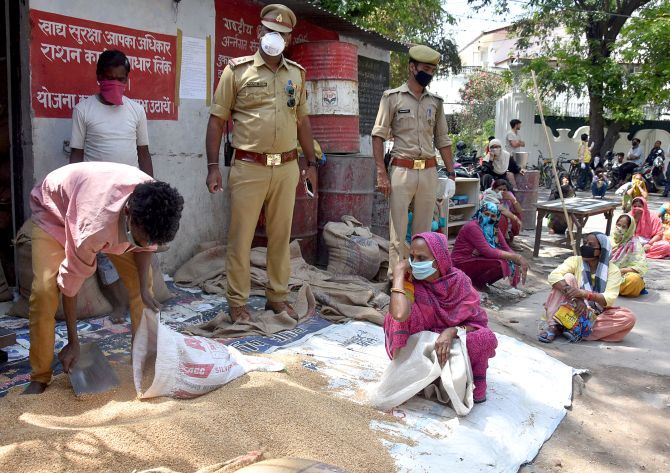
Has the NFSA helped the poor to get out of poverty and helped them to better their position in the other four parameters that define poverty: Nutrition, cooking fuel, sanitation and housing?
Is there any study done to prove the NFSA helped the poor to achieve these parameters?
There is a research paper (external link) by Dr Surjit Bhalla, Karan Bhasin and Dr Arvind Virmani which says that due to highly subsidised food under the NFSA, poverty in India has been reduced to less than 1 percent.
So, it does make a difference in the lives of poor families if they get highly subsidised food grains.
The biggest worry of middle class Indians is food inflation. Do these measures of providing food under NFSA affect the prices of food grains available to the middle class?
As far as wheat inflation is concerned, it is at about 20 per cent year on year and the government is likely to release wheat under the open market sale scheme which will hopefully bring down prices.
It is possible that the wheat prices may fall from Rs 30 per kg in the open market to about Rs 26 or Rs 27 per kg.
The prices will further fall when the new wheat crops comes to the market in April 2023.

